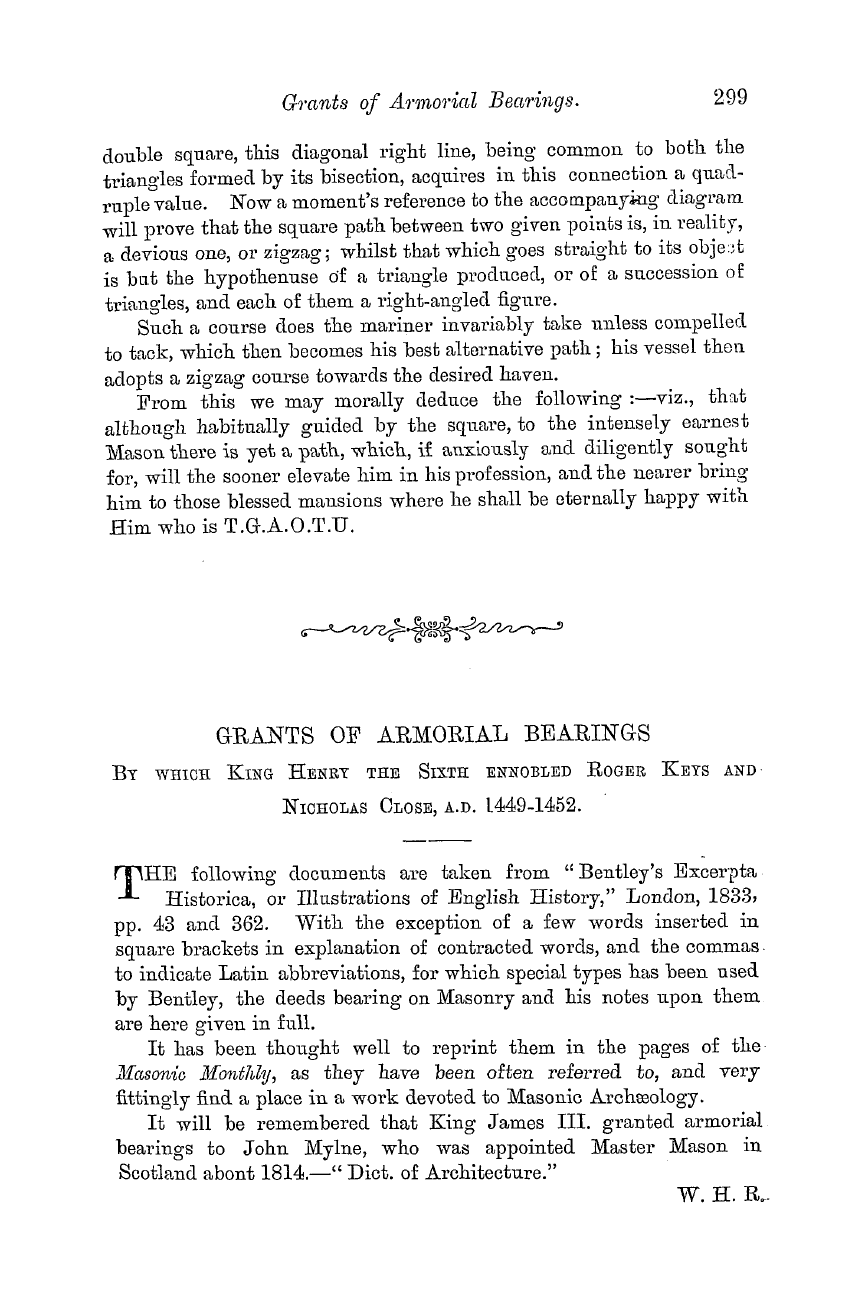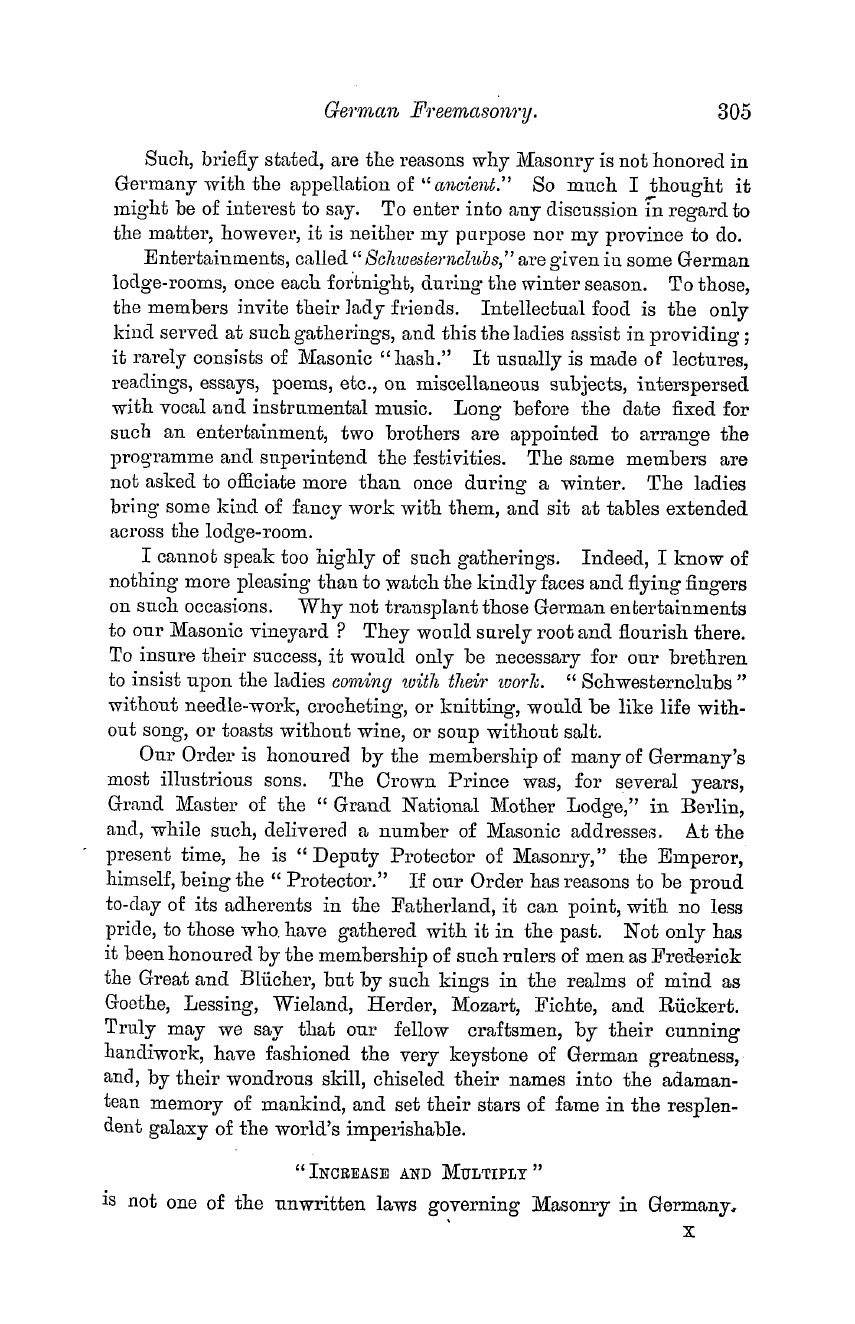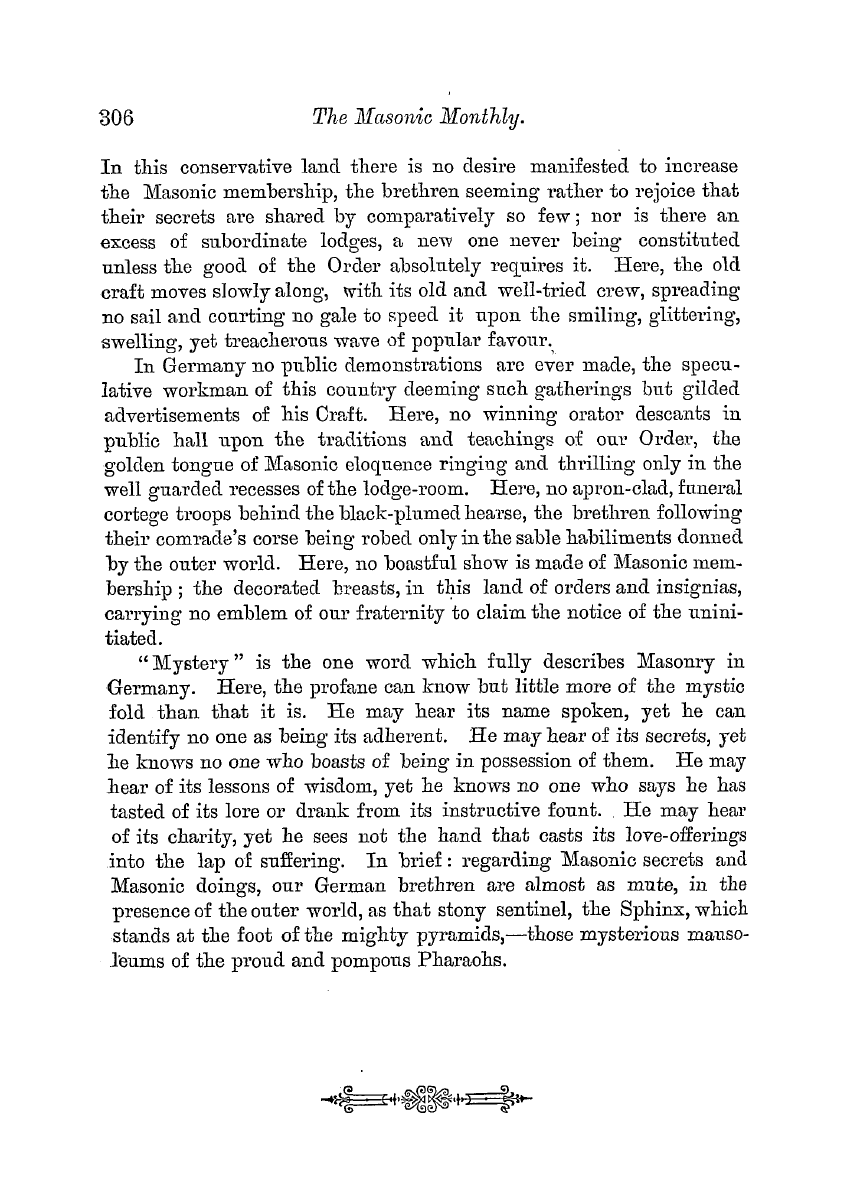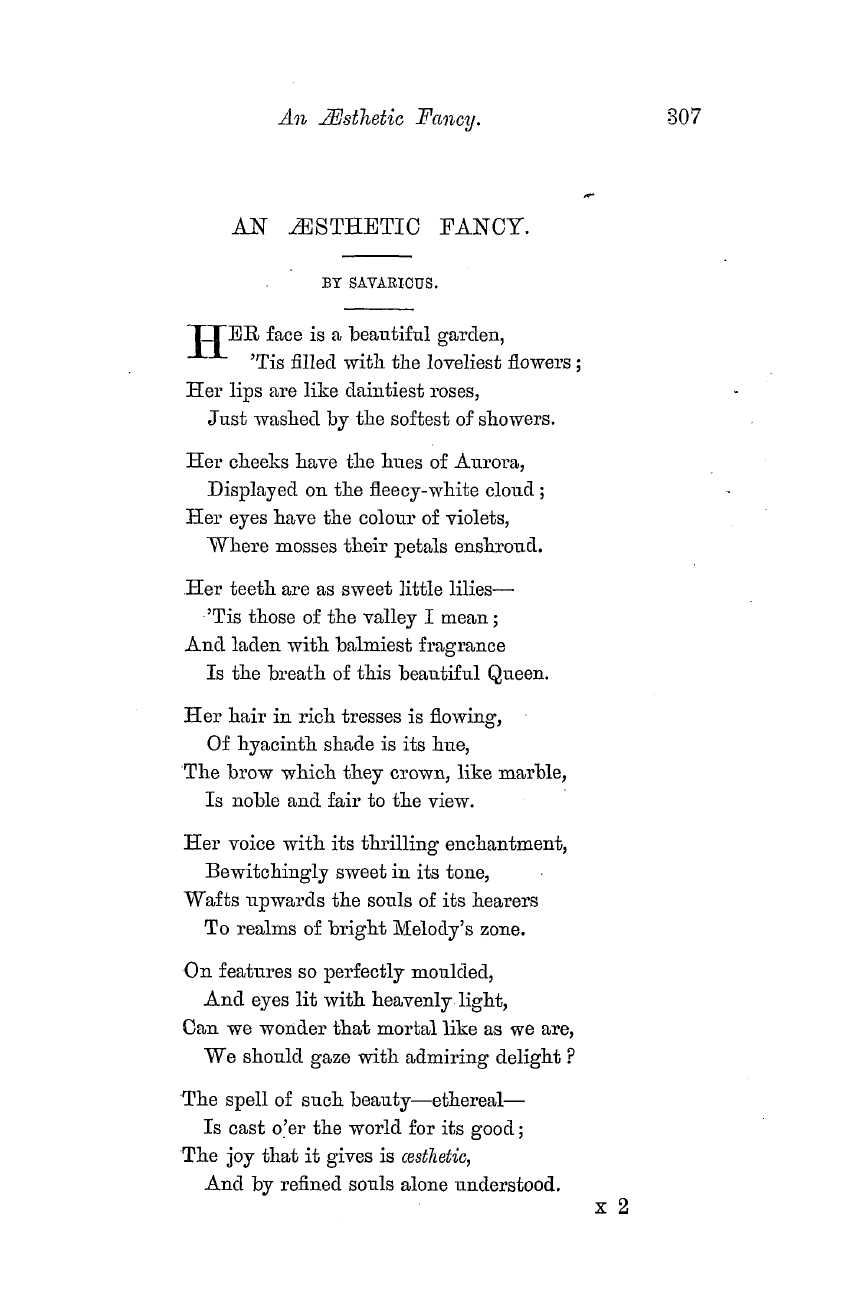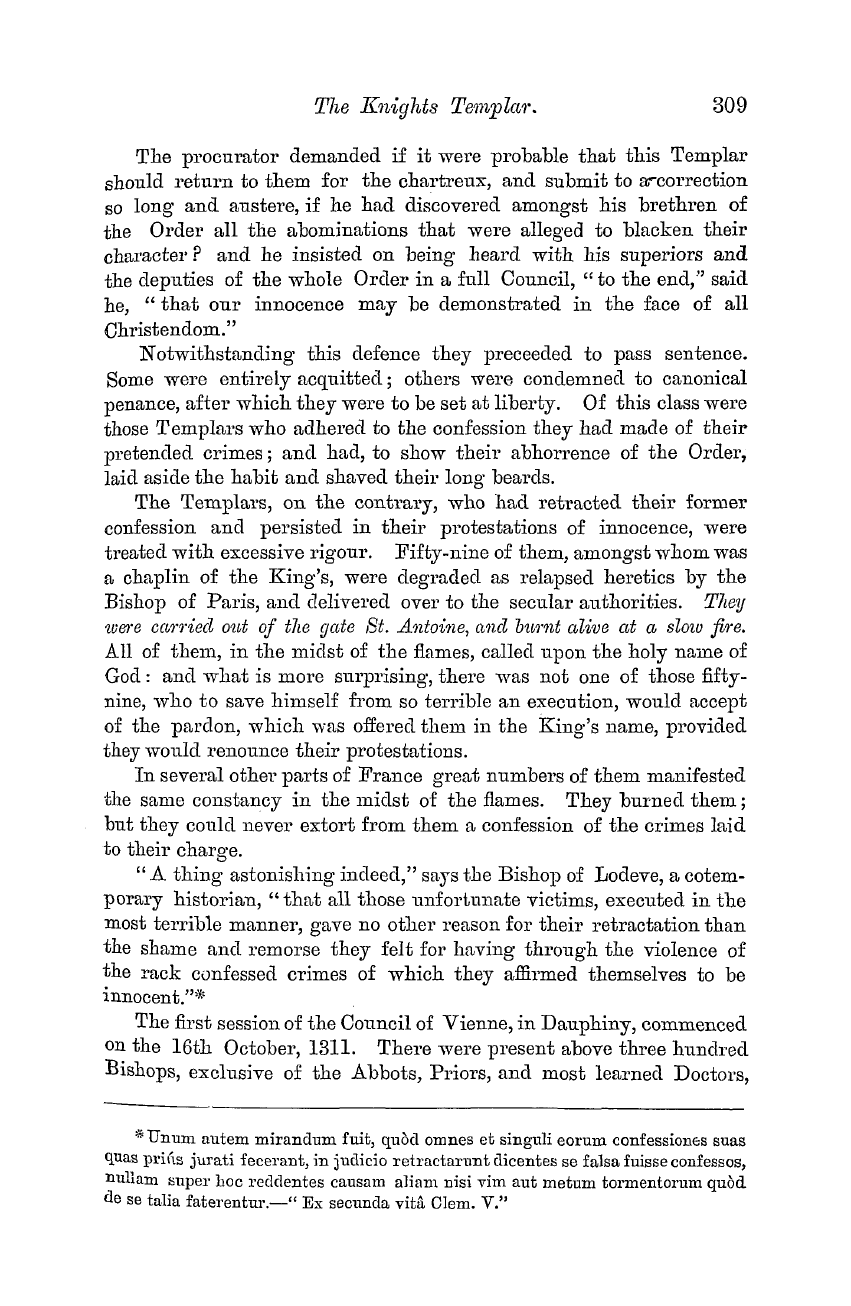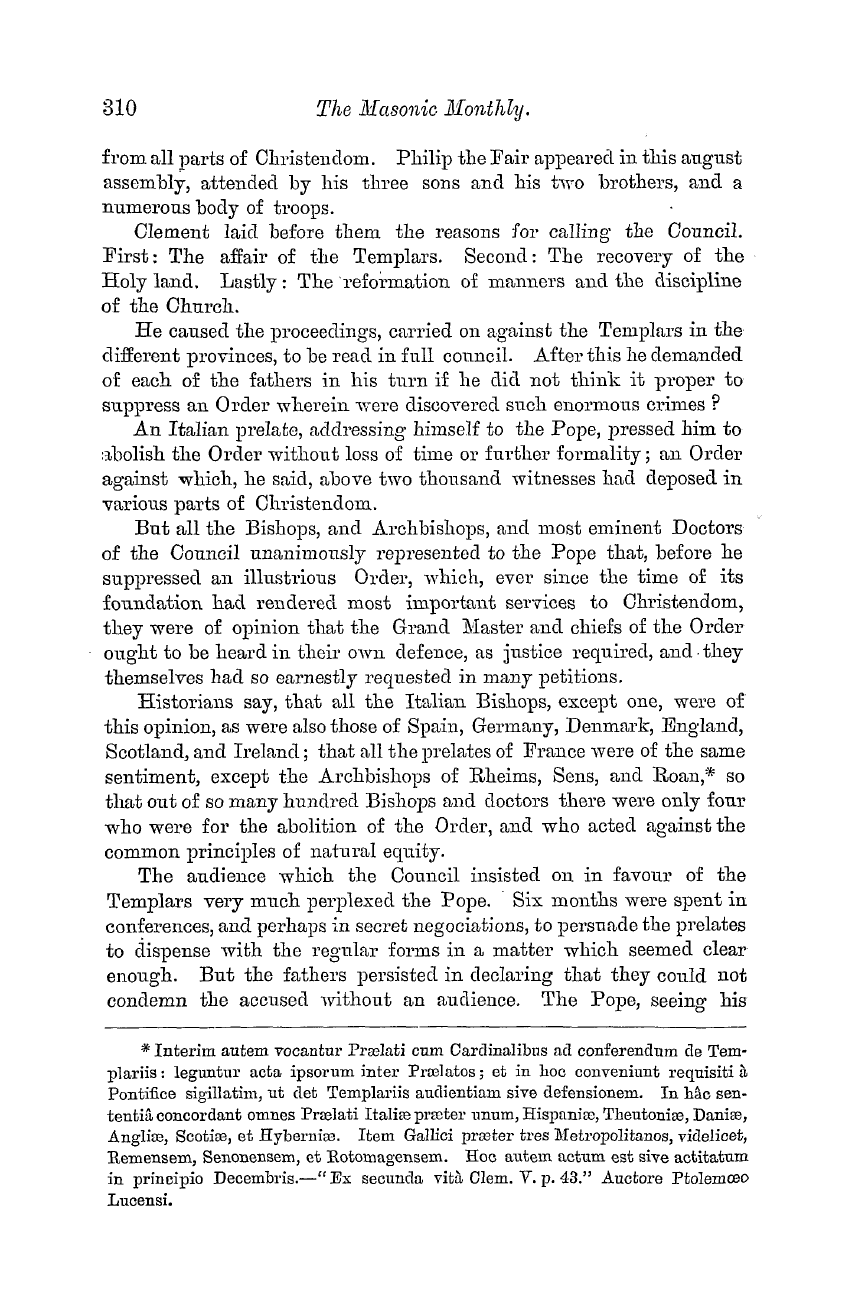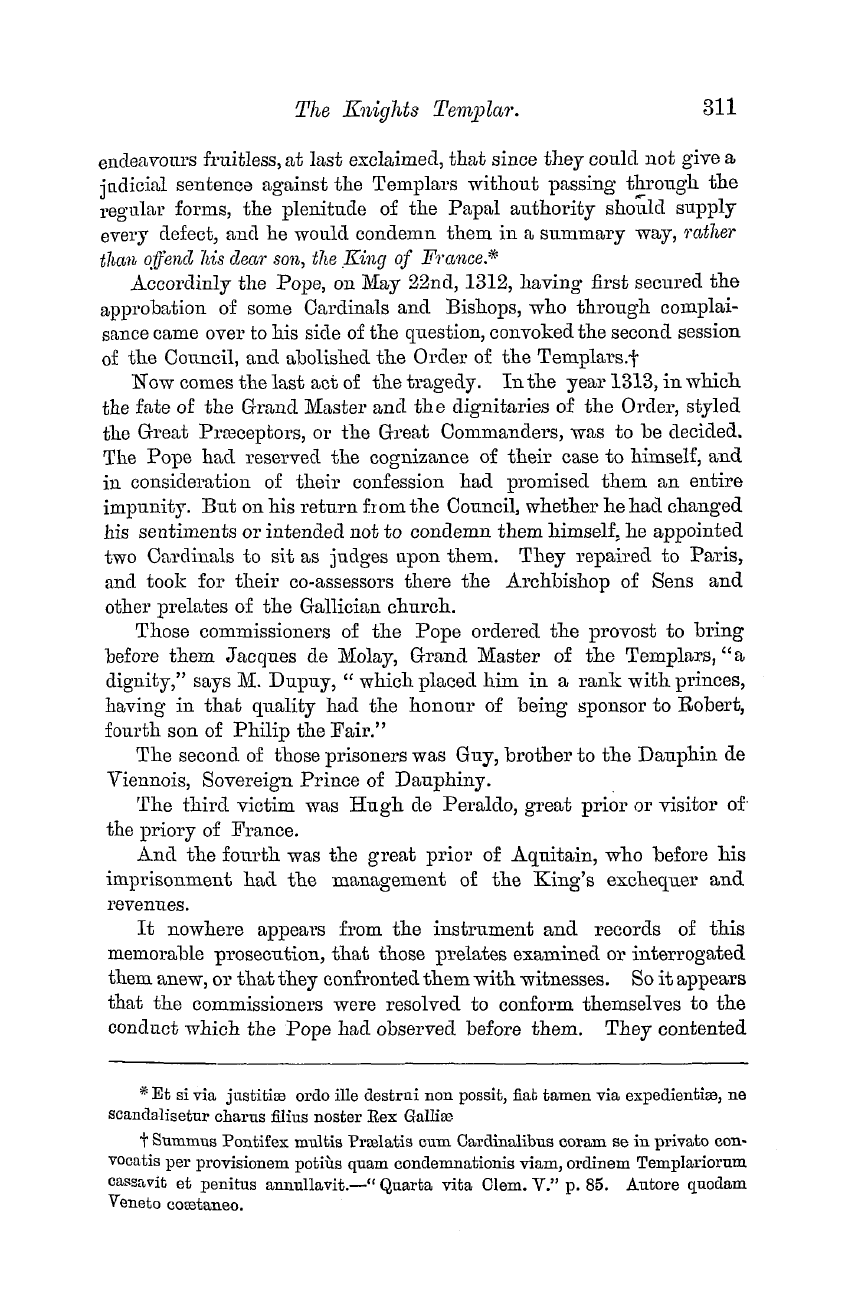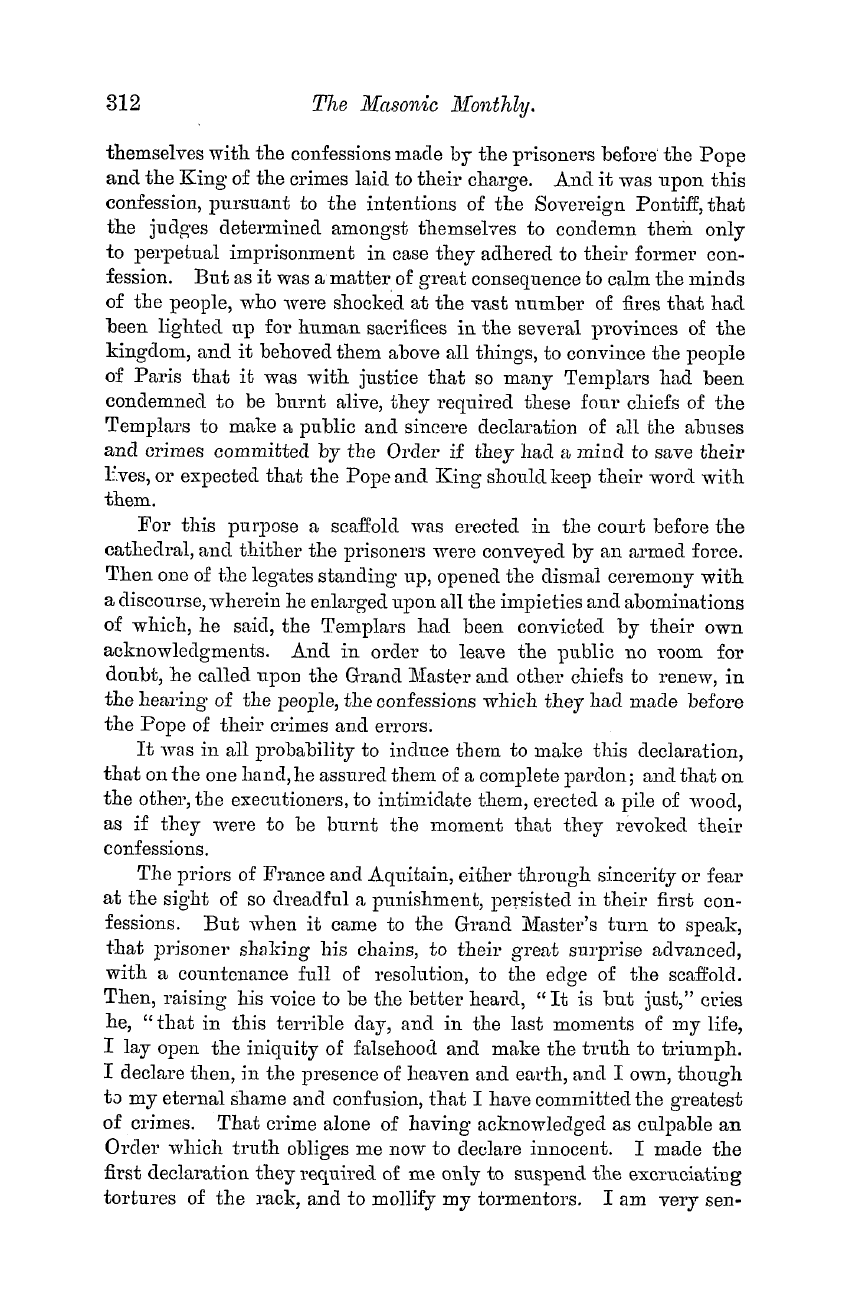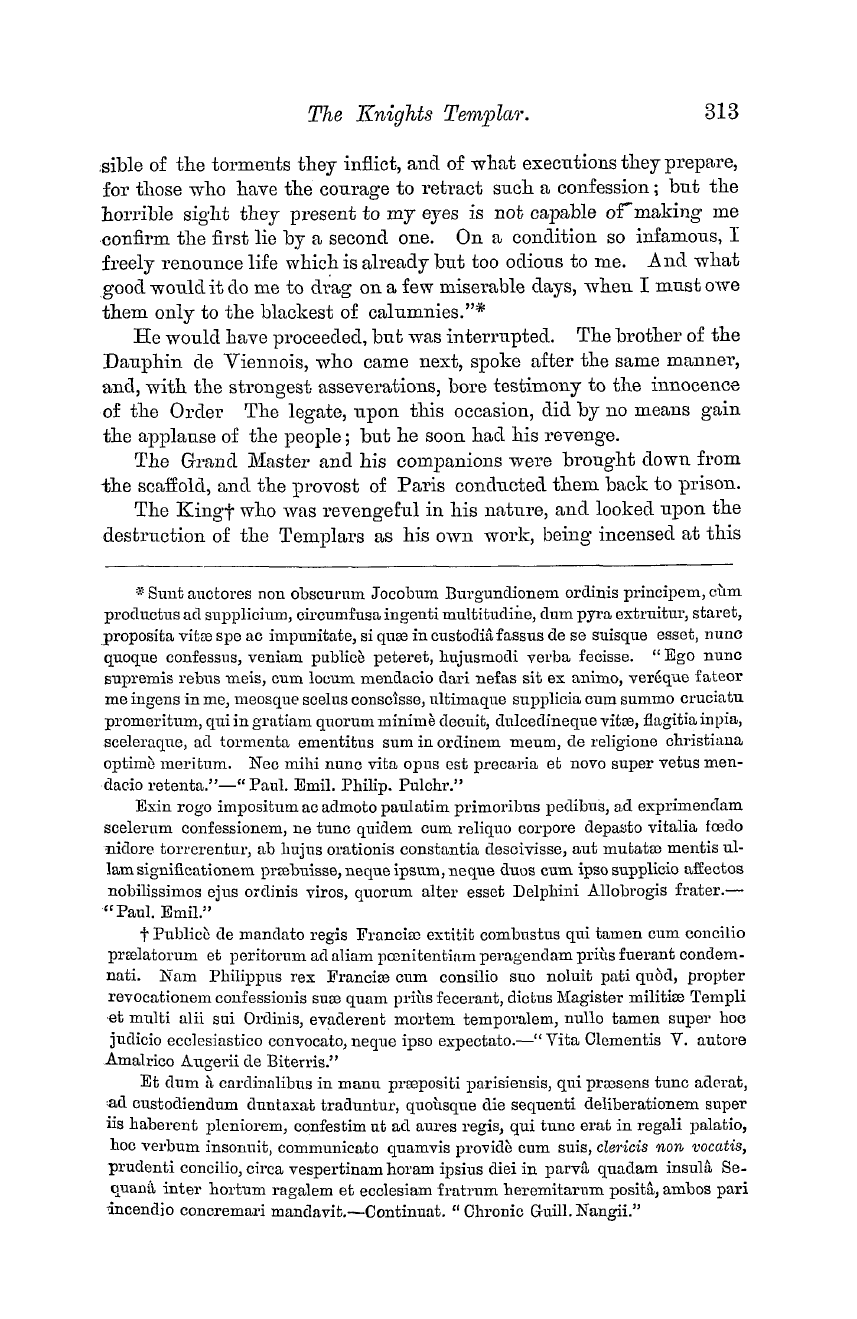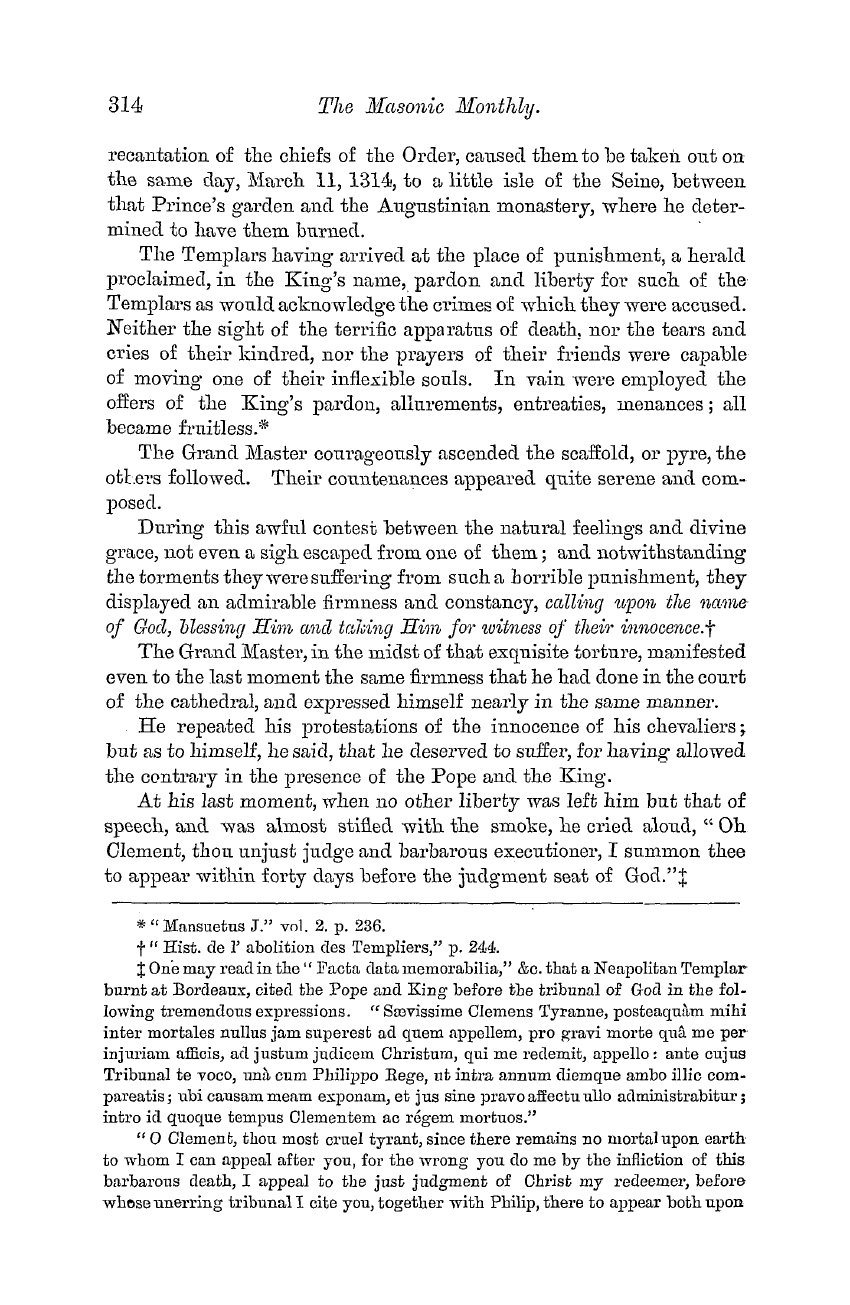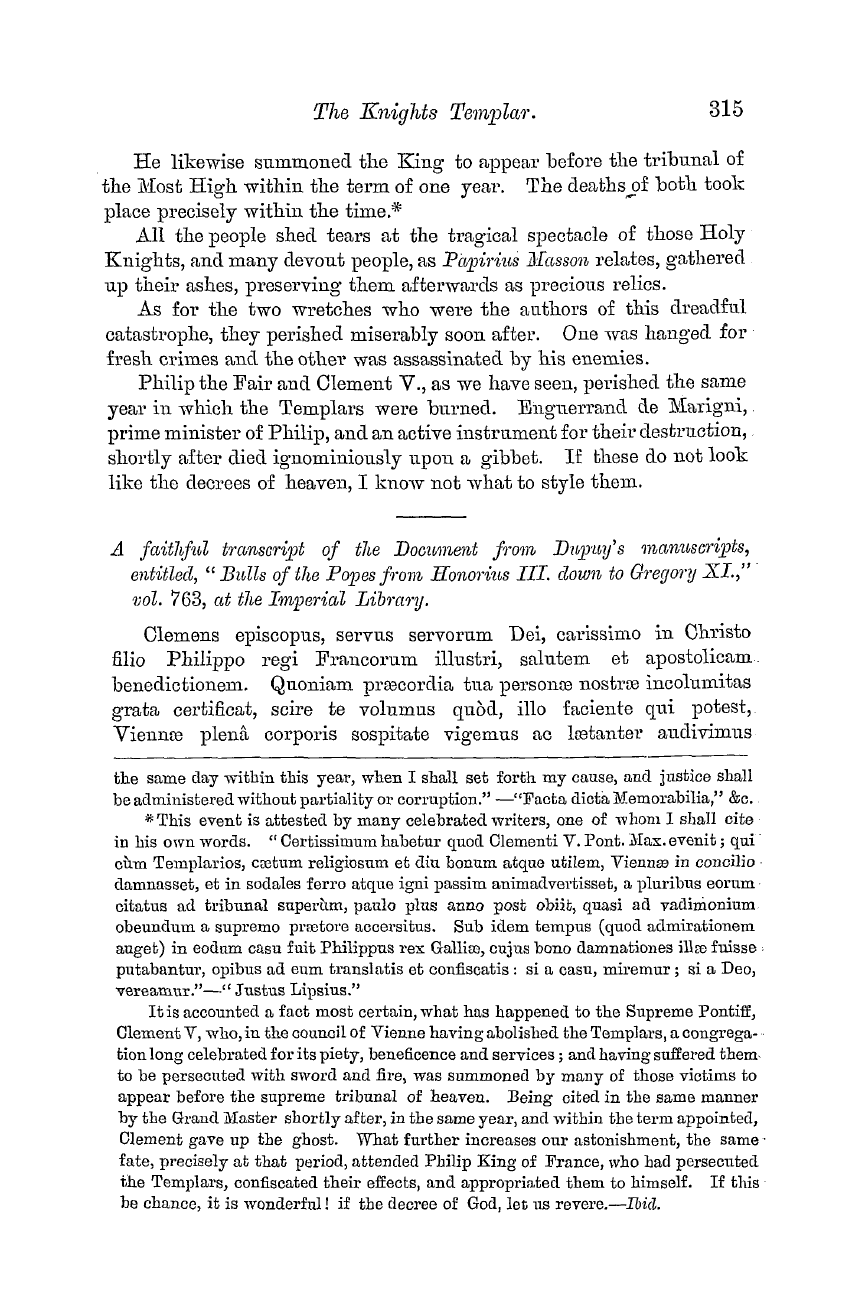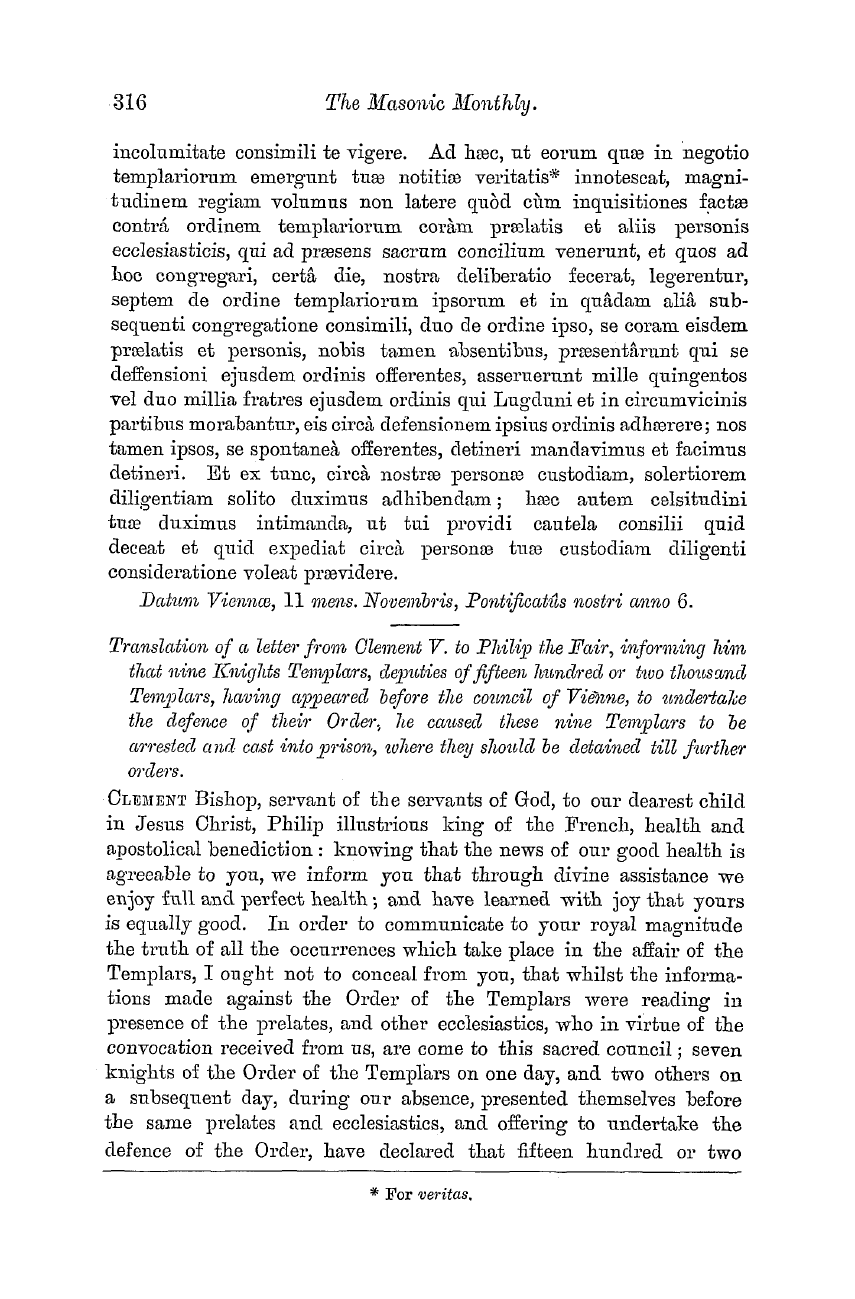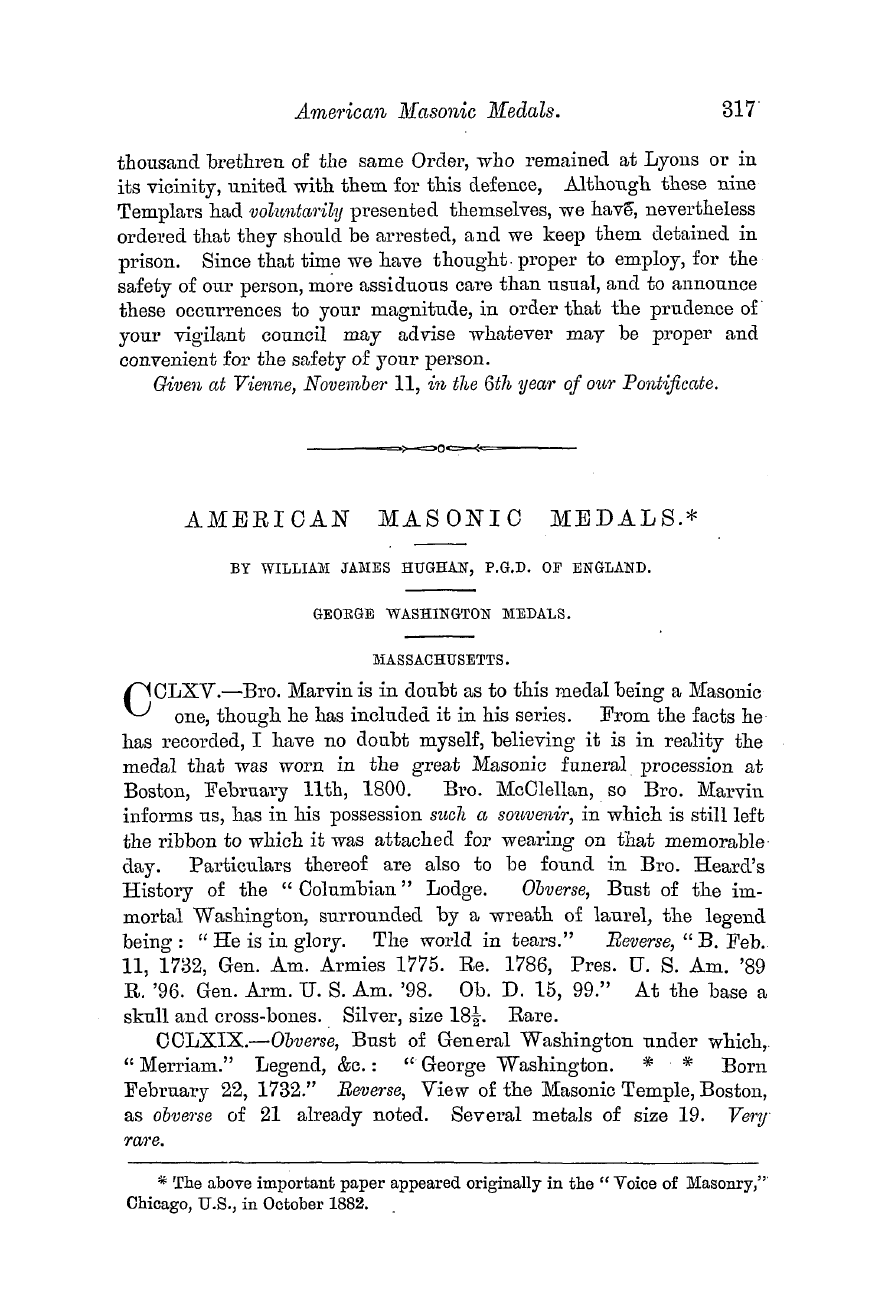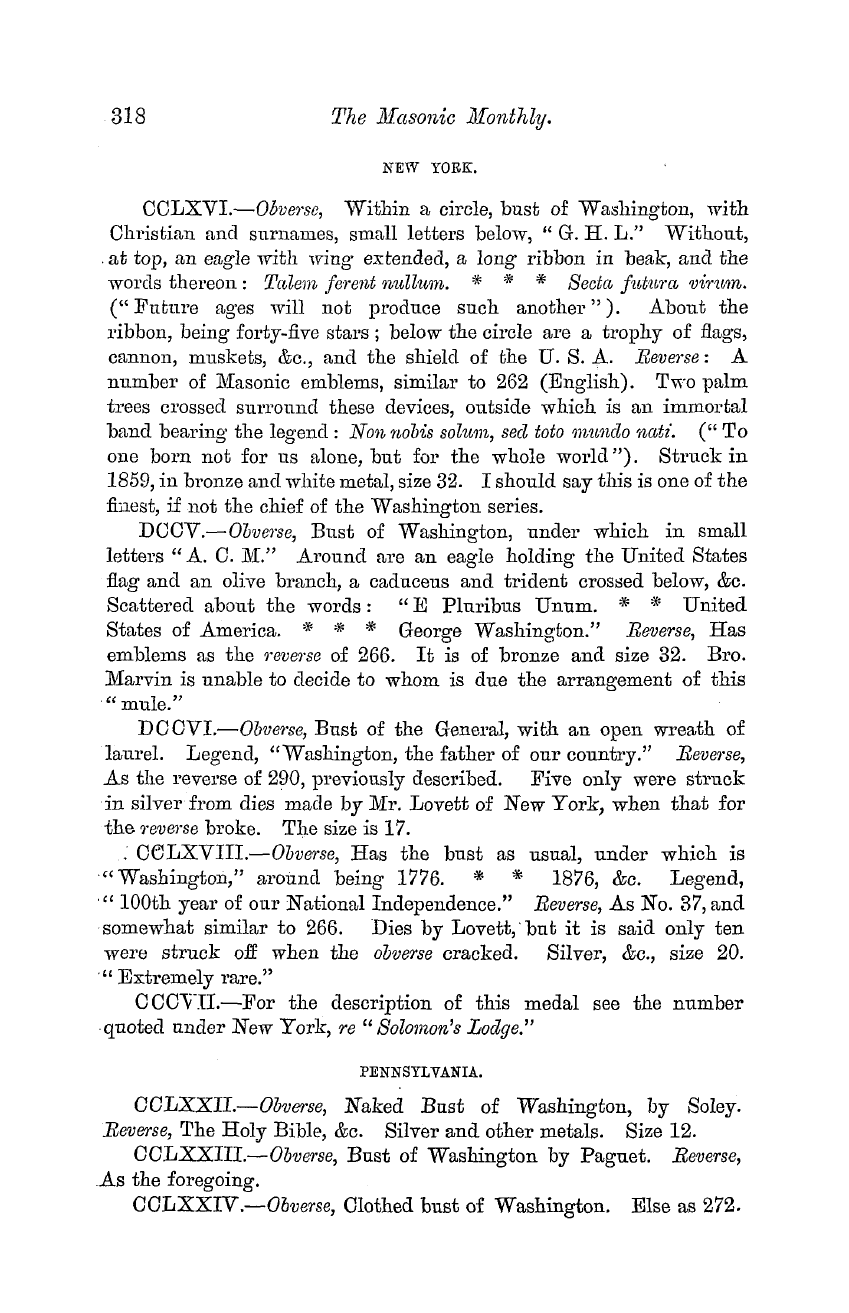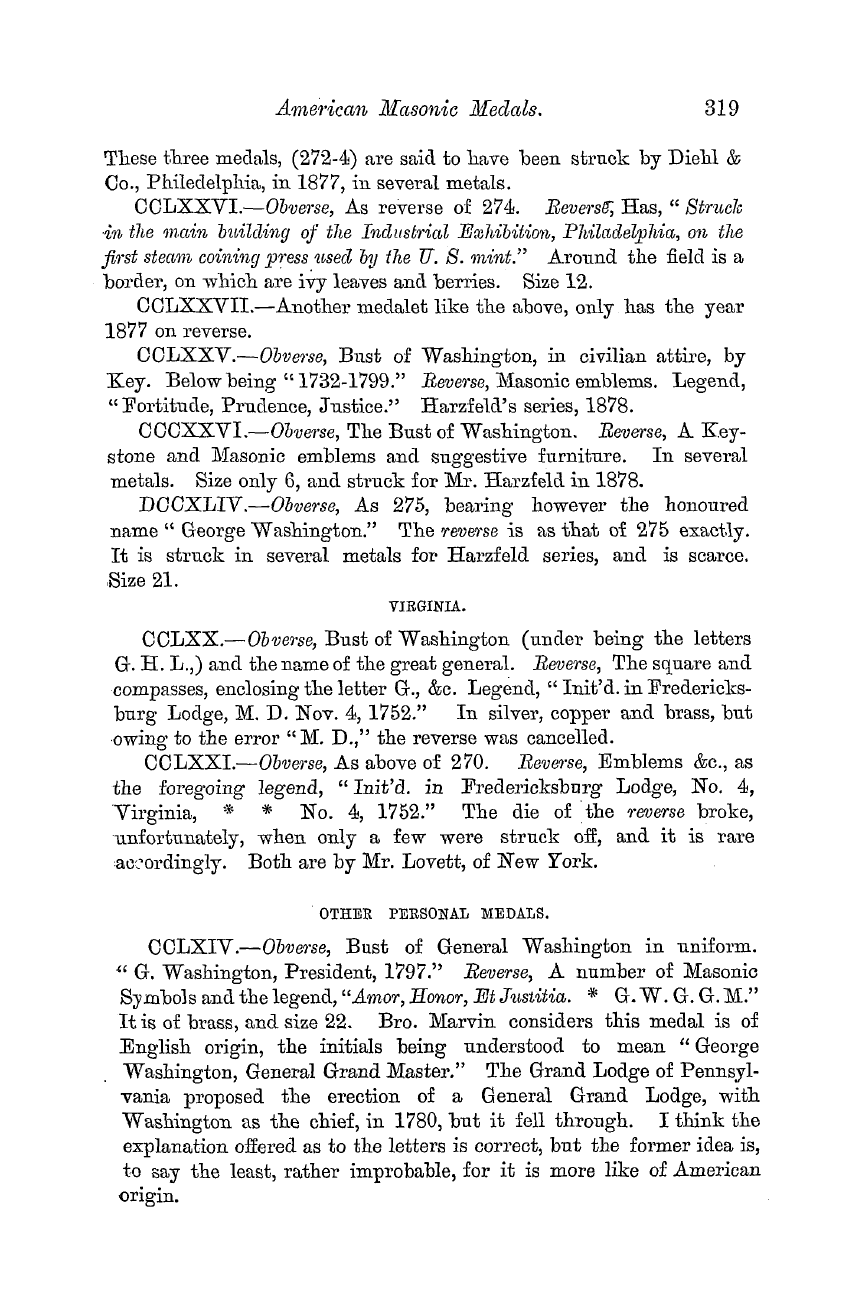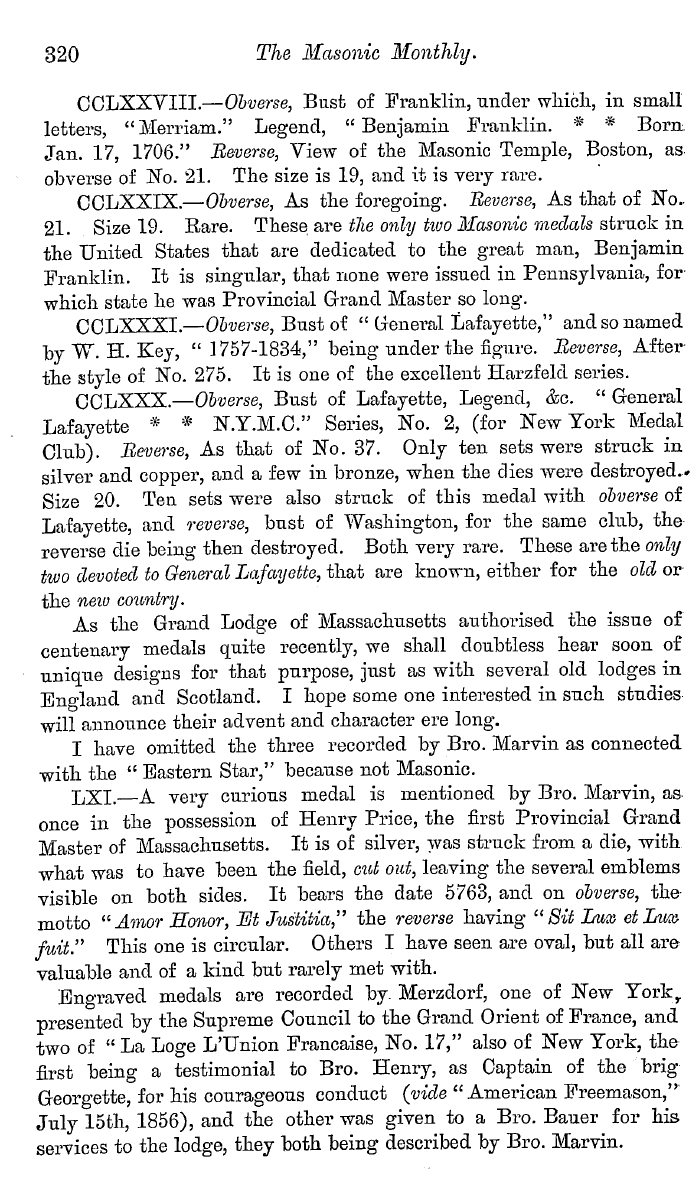Note: This text has been automatically extracted via Optical Character Recognition (OCR) software.
On The Word "Ehre" (Honour), And Its Derivatives,
in such slight communication with their brothers in England , that English works were seldom or never read , and that Anderson ' s "Constitutions " were at first neglected and at last entirely forgotten .-In 1779 , however , the Abbe Grandidier , a non-mason , came near the mark . In pursuing his researches amongst the archives of
Strassburg Cathedral , he was struck with the outward similarit y between the Ancient Gild of Stonemasons of that city and the modern Freemasons . He came to the conclusion that Freemasonry was derived from these Steinmetzen , and published his opinion in the "Journal de Nancy" and the ** Journal de Monsieur ( 1779 ) , " and the
"Essais historiques et Topographiques sur 1 ' Eglise Cathedrale de Strasbourg , " 1782 . The outward points of resemblance were certainly striking ' , and with the inner life of Freemasonry , being a profane , he was unacquainted , and could therefore not know that the Steinmetzen failed to exhibit any signs of our esoteric teaching . The clue thus given by
Grandidier gave rise , however , to a more historical cl ass of German writers . Vogel has been mentioned . In his letters , he compares Grandidier ' s statements with Anderson ' s " Constitutions , " brings back
the origin of the craft to the English builders , and comes to the conclusion that the masons of England and the Steinmetzen of Germany were not unconnected in origin . Albrecht followed on the same lines ( 1792 ) . Krause ( 1810 ) and Heldman ( 1819 ) went even further , and attempted to prove that the Strassburg fraternity was founded by
English Masons in the thirteenth century . They were , however , led astray by a belief in the authenticity of the so-called York " Constitution , " supposed to date from 926 . Passing over many writers of lesser importance , we come to the last of this school , Kloss , who published his " Friemaurerei in ihrer wahren Bedeutung " in 1846 . He , the most
careful and critical of all Masonic writers , rejects the " 926 Constitution , " and the consequent descent of the Steinmetzen from England ; he re-affirms the Operative origin of Freemasonry ; he shows the general outward resemblance between the German and English builders , and thence concludes a community of origin , but he is far from claiming
for the Steinmetzen the parentage of English Freemasonry , and makes no attempt to endow them with any superior moral tendencies or esoteric doctrines . On the contraiy , he attributes fraud and deceit to them as a body , and stigmatises them as a huge trades union .
The third , and present school of German Masonic writers arose with Fallou , in 1848 . Kis theory is briefly that Freemasonry is directly the outcome of English Operative Masonry ; that the English Gilds of Masons are a branch of the Steinmetzen transplanted here in the thirteenth and fourteenth centuries ; and that the Steinmetzen owe their internal formation partly to inherent customs of German
Note: This text has been automatically extracted via Optical Character Recognition (OCR) software.
On The Word "Ehre" (Honour), And Its Derivatives,
in such slight communication with their brothers in England , that English works were seldom or never read , and that Anderson ' s "Constitutions " were at first neglected and at last entirely forgotten .-In 1779 , however , the Abbe Grandidier , a non-mason , came near the mark . In pursuing his researches amongst the archives of
Strassburg Cathedral , he was struck with the outward similarit y between the Ancient Gild of Stonemasons of that city and the modern Freemasons . He came to the conclusion that Freemasonry was derived from these Steinmetzen , and published his opinion in the "Journal de Nancy" and the ** Journal de Monsieur ( 1779 ) , " and the
"Essais historiques et Topographiques sur 1 ' Eglise Cathedrale de Strasbourg , " 1782 . The outward points of resemblance were certainly striking ' , and with the inner life of Freemasonry , being a profane , he was unacquainted , and could therefore not know that the Steinmetzen failed to exhibit any signs of our esoteric teaching . The clue thus given by
Grandidier gave rise , however , to a more historical cl ass of German writers . Vogel has been mentioned . In his letters , he compares Grandidier ' s statements with Anderson ' s " Constitutions , " brings back
the origin of the craft to the English builders , and comes to the conclusion that the masons of England and the Steinmetzen of Germany were not unconnected in origin . Albrecht followed on the same lines ( 1792 ) . Krause ( 1810 ) and Heldman ( 1819 ) went even further , and attempted to prove that the Strassburg fraternity was founded by
English Masons in the thirteenth century . They were , however , led astray by a belief in the authenticity of the so-called York " Constitution , " supposed to date from 926 . Passing over many writers of lesser importance , we come to the last of this school , Kloss , who published his " Friemaurerei in ihrer wahren Bedeutung " in 1846 . He , the most
careful and critical of all Masonic writers , rejects the " 926 Constitution , " and the consequent descent of the Steinmetzen from England ; he re-affirms the Operative origin of Freemasonry ; he shows the general outward resemblance between the German and English builders , and thence concludes a community of origin , but he is far from claiming
for the Steinmetzen the parentage of English Freemasonry , and makes no attempt to endow them with any superior moral tendencies or esoteric doctrines . On the contraiy , he attributes fraud and deceit to them as a body , and stigmatises them as a huge trades union .
The third , and present school of German Masonic writers arose with Fallou , in 1848 . Kis theory is briefly that Freemasonry is directly the outcome of English Operative Masonry ; that the English Gilds of Masons are a branch of the Steinmetzen transplanted here in the thirteenth and fourteenth centuries ; and that the Steinmetzen owe their internal formation partly to inherent customs of German










































